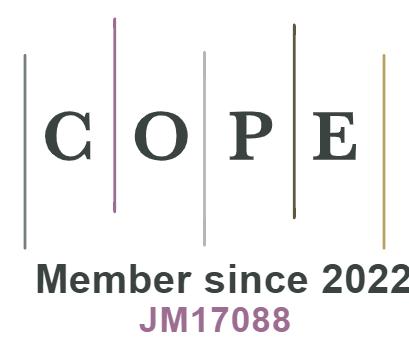REFERENCES
1. Zhao C, Huang B. A full-condition monitoring method for nonstationary dynamic chemical processes with cointegration and slow feature analysis. AIChE J 2018;64:1662-81.
2. Qin Y, Zhao C, Gao F. An iterative two-step sequential phase partition (ITSPP) method for batch process modeling and online monitoring. AIChE J 2016;62:2358-73.
3. Zhang S, Zhao C. Slow-feature-analysis-based batch process monitoring with comprehensive interpretation of operation condition deviation and dynamic anomaly. IEEE Trans Ind Electron 2019;66:3773-83.
4. Yin S, Li X, Gao H, Kaynak O. Data-based techniques focused on modern industry: An overview. IEEE Trans Ind Electron 2015;62:657-67.
5. Ge Z, Song Z, Deng SX, Huang B. Data mining and analytics in the process industry: the role of machine learning. IEEE Access 2017;5:20590-616.
6. Yuan X, Wang Y, Yang C, et al. Weighted linear dynamic system for feature representation and soft sensor application in nonlinear dynamic industrial processes. IEEE Trans Ind Electron 2018;65:1508-17.
7. Song B, Shi H. Fault detection and classification using quality-supervised double-layer method. IEEE Trans Ind Electron 2018;65:8163-72.
8. Peng X, Tang Y, Du W, Qian F. Multimode process monitoring and fault detection: a sparse modeling and dictionary learning method. IEEE Trans Ind Electron 2017;64:4866-75.
9. He Y, Le Z, Ge Z, et al. Distributed model projection based transition processes recognition and quality-related fault detection. Chemometr Intell Lab 2016;159:69-79.
10. Lv Z, Yan X, Jiang Q. Batch process monitoring based on just-in-time learning and multiple-subspace principal component analysis. Chemometr Intell Lab 2014;137:128-39.
11. Jiang Q, Ding SX, Wang Y, Yan X. Data-driven distributed local fault detection for large-scale processes based on the GA-regularized canonical correlation analysis. IEEE Trans Ind Electron 2017;64:8148-57.
12. Lv Z, Yan X. Hierarchical support vector data description for batch process monitoring. Ind Eng Chem Res 2016;55:9205-14.
13. Jian H, Yan X. Gaussian and non-Gaussian double subspace statistical process monitoring based on principal component analysis and independent component analysis. Ind Eng Chem Res 2015;54:1015-27.
14. Tong C, Lan T, Shi X. Double-layer ensemble monitoring of non-gaussian processes using modified independent component analysis. ISA Trans 2017;68:181-8.
15. Lv Z, Jiang Q, Yan X. Batch process monitoring based on multisubspace multiway principal component analysis and time-series bayesian inference. Ind Eng Chem Res 2014;53:6457-66.
16. Ge Z, Xie L, Kruger U, et al. Sensor fault identification and isolation for multivariate non-Gaussian processes. J Process Contr 2009;19:1707-15.
17. Ge Z, Gao F, Song Z. Batch process monitoring based on support vector data description method. J Process Contr 2011;21:949-59.
18. Lv Z, Yan X, Jiang Q, et al. Just-in-time learning-multiple subspace support vector data description used for non-Gaussian dynamic batch process monitoring. J Chemometr 2019:e3134.
19. Jiang Q, Yan X. Just-in-time reorganized PCA integrated with SVDD for chemical process monitoring. AIChE J 2014;60:949-65.
21. Jiang Q, Yan X. Parallel PCA-KPCA for nonlinear process monitoring. Control Eng Pract 2018;80:17-25.
22. Birol G, Ündey C, Çinar A. A modular simulation package for fed-batch fermentation: penicillin production. Comput Chem Eng 2002;26:1553-65.
23. Lv Z, Yan X, Jiang Q. Batch process monitoring based on self-adaptive subspace support vector data description. Chemometr Intell Lab 2017;170:25-31.
24. Nomikos P, Macgregor JF. Multi-way partial least squares in monitoring batch processes. Chemometr Intell Lab Syst 1995;30:97-108.
25. Lee JM, Yoo C, Lee IB. On-line batch process monitoring using different unfolding method and independent component analysis. J Chem Eng Japan 2003;36:1384-96.
26. Chen J, Liu K. On-line batch process monitoring using dynamic PCA and dynamic PLS models. Chem Eng Sci 2002;57:63-75.







